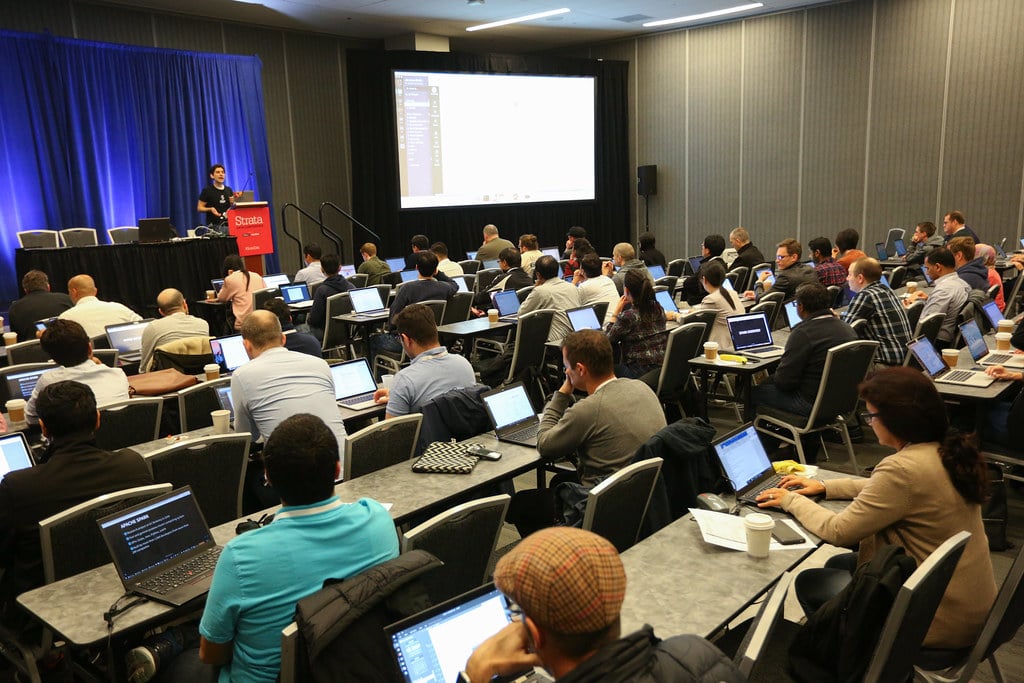Since the COVID-19 pandemic began in late 2019, among the many immediate impacts was the cancellation of large, in-person tech conferences and events. Starting in February, when the massive Mobile World Congress event in Barcelona was canceled outright after a number of big-name companies pulled out, numerous other conferences were either postponed or have gone virtual. In March, over the objections of its organizers, the South by Southwest (SXSW) media and tech gathering was cancelled by the city of Austin, where it has taken place for the past 23 years. Apple, Facebook, Google and Microsoft all transitioned their worldwide developer conferences to a virtual format. Black Hat USA which normally sees thousands of security professionals descend on Las Vegas in late July/early August for business (and an above average amount of socializing) also went virtual. The list goes on.
At this point, the immediate future of the tech conference scene is unclear. Many companies continue to place restrictions on employee travel and have told employees that they will be working from home until early or even mid 2021. While efforts to control the spread of the virus have largely been successful in parts of Asia and Western Europe, in the US and elsewhere in the world COVID-19 continues to be a major and still growing public health concern. That effectively rules out the possibility of large in-person events until at least the spring of 2021 or even, potentially, until there is a widely available COVID-19 vaccine (whenever that may be).
Amid this uncertainty, the success of tech conferences that went virtual in 2020 out of necessity has prompted some organizations to float the possibility of adopting the format permanently. Eliminating the cost of travel and lodging is certainly an enticing incentive for many companies. And the lower barrier to entry can have a democratizing effect on which companies and individuals have the opportunity to participate. But there are clearly compromises that come with being entirely virtual, and some aspects of real-world conferences–particularly the relationship building, person-to-person interactions and chance encounters that lead to new business opportunities–can’t easily be replicated when attendees aren’t physically in the same space.
So, what does this mean from a PR standpoint? We’re still learning.
In the pre-COVID days, both established companies and start-ups often used the focused attention and critical mass of a conference as a springboard to launch or drive awareness for new products and services. In-person conferences provided invaluable and otherwise hard-to-come-by opportunities (both scheduled and serendipitous) to get in front of many media and influencers at once. Foursquare, for example, famously launched at SXSW; Twitter (in a different year) got its close-up at the same show and became a sensation among the digerati, though it had actually launched 9 months earlier. There are hundreds if not thousands of similar stories.
Today, in the absence of traditional tech conferences, bigger companies can stage their own virtual events, confident that they can still attract media attention. Samsung’s recent product introduction event is one example. That option doesn’t really exist yet for smaller, less well-known companies. (Though that sounds like a business idea someone should jump on.)
Even in the best of circumstances, smaller companies often struggle to rise above the noise at a major industry event, with a multitude of companies vying for limited media attention and time. Anyone who has ever tried to get reporters to attend a briefing at a booth or a press conference that takes place more than a 3-minute walk off of the show floor knows how hard it can be to compete.
Next year’s CES conference will be an early and major test case for whether and how the virtual format can work for companies trying to introduce new products. The event, which attracted more than 182,000 attendees in January of 2020, will be entirely virtual in 2021. Conference organizers are offering a virtual product showcase, but it remains to be seen whether it can replicate the truly massive number of product introductions (many of which are incredibly random and just plain weird) that happen during a typical CES or provide the kind of environment where a company or product can truly be “discovered.”
For now, it’s safe to say that companies will need to rely on either good, old fashioned pitching and storytelling to get attention in conjunction with an industry event or come up with a creative idea to get media to attend a virtual event that might not otherwise show up on their radar. That said, large events–even virtual ones– still provide a news hook that can be exploited, especially if you can put your company in the context of a relevant trend or have something groundbreaking to talk about. Which, come to think about it, is pretty much what you should be doing anyway.

